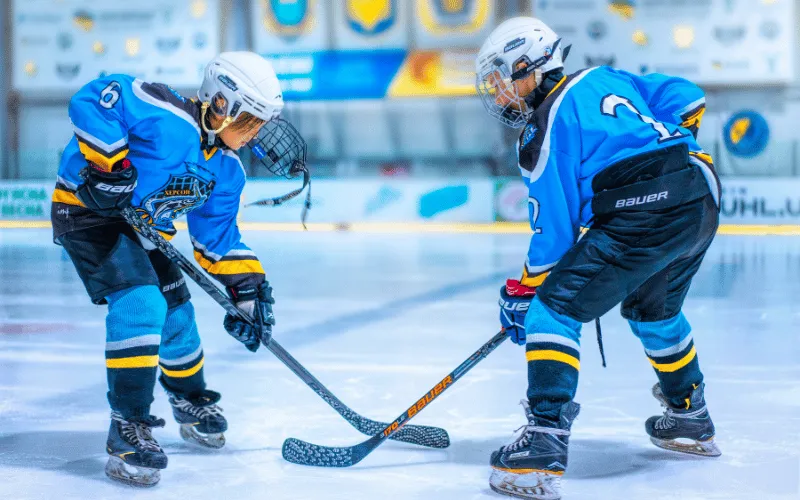Hockey Game is one of the most thrilling and physically demanding sports in the world. Known for its lightning-fast pace, intense teamwork, and electrifying atmosphere, the hockey game captivates millions of fans across continents. Whether it’s ice hockey played in frozen arenas or field hockey contested on grass or turf, the game combines athleticism, precision, and strategy in a way few sports can match. Let’s take a deeper look into what makes the hockey game so special — from its history and rules to its global popularity and cultural impact.
History of the Hockey Game
The origins of the hockey game date back centuries. Ancient civilizations like the Greeks, Egyptians, and Persians played stick-and-ball games resembling modern hockey. However, organized field hockey took shape in 19th-century England. It quickly spread throughout the British Empire, finding a passionate following in countries like India, Pakistan, and Australia.
Ice hockey, on the other hand, developed in Canada in the late 1800s. Early settlers adapted field hockey for frozen ponds and lakes, leading to the creation of one of the fastest and most exciting sports ever invented. The first official indoor hockey game was played in Montreal in 1875, marking the beginning of modern ice hockey.
Today, field hockey and ice hockey are both internationally recognized and governed by organizations such as the International Hockey Federation (FIH) and the International Ice Hockey Federation (IIHF).
Types of Hockey Games
There are several versions of the hockey game, each with its own charm and fan base:
- Ice Hockey – Played on an ice rink with skates and a rubber puck. It’s extremely popular in countries like Canada, the USA, Russia, Sweden, and Finland. The National Hockey League (NHL) is the premier professional ice hockey league in the world.
- Field Hockey – Played on grass or synthetic turf using a hard ball and curved sticks. It’s a major sport in India, the Netherlands, Germany, Australia, and Argentina. The Hockey World Cup and the Olympic Games are the most prestigious tournaments.
- Roller Hockey (Inline Hockey) – A version played on rollerblades using a puck or ball. It combines the speed of ice hockey with the accessibility of playing on hard surfaces.
- Street Hockey – An informal version often played without skates, using simple sticks and a ball. It’s popular among youth and communities where ice rinks or turf fields aren’t easily available.
Each form of the hockey game emphasizes teamwork, strategy, and coordination, regardless of surface or equipment.
Basic Rules of the Hockey Game

While the specific rules differ slightly between versions, the core objective remains the same — to score more goals than the opponent by hitting the puck or ball into their net using a hockey stick.
In ice hockey, each team typically consists of six players: one goaltender, two defensemen, and three forwards. The game is divided into three 20-minute periods. Players use quick passes, strategic positioning, and physical play to create scoring opportunities while defending their own goal.
In field hockey, each team has 11 players, including a goalkeeper. The game lasts for four quarters of 15 minutes each. Players are not allowed to use their feet (except the goalkeeper) and must control the ball with the flat side of the stick. Precision, agility, and teamwork are vital to winning matches.
Penalties are enforced in both versions for fouls such as tripping, high sticking, or dangerous play. Penalty corners (in field hockey) or power plays (in ice hockey) add an extra layer of excitement to the game.
Skills and Strategies in Hockey
A hockey game demands a blend of physical and mental skills. Players need endurance, strength, balance, and coordination, but also sharp tactical awareness.
- Skating and Dribbling: Ice hockey players must master skating techniques to move quickly and efficiently on the rink, while field hockey players develop dribbling skills to maneuver the ball around defenders.
- Passing and Shooting: Precision passing and accurate shooting are key to creating scoring chances.
- Defense and Goaltending: Defenders block shots, mark opponents, and maintain structure, while goalkeepers rely on reflexes and anticipation to make crucial saves.
- Teamwork: No player can win alone. Successful teams communicate effectively and understand each other’s movements and strategies.
Global Popularity and Major Competitions
The hockey game has achieved global recognition through major tournaments and leagues.
In ice hockey, the NHL dominates North America, with teams like the Toronto Maple Leafs, Chicago Blackhawks, and Montreal Canadiens boasting rich histories. The Stanley Cup, awarded to the NHL champion, is one of the most prestigious trophies in sports. Internationally, the Winter Olympics and IIHF World Championships showcase national pride, with fierce rivalries between Canada, Russia, and the United States.
In field hockey, nations such as India, Pakistan, the Netherlands, and Australia have long-standing traditions of excellence. The Hockey World Cup, Champions Trophy, and Olympic Hockey Tournament bring the world’s best teams together, drawing millions of viewers and inspiring new generations of players.
The Cultural and Emotional Impact of Hockey
Beyond the competition, the hockey game represents passion, resilience, and unity. It brings people together, whether they’re fans cheering in frozen arenas in Canada or schoolchildren playing barefoot in rural India. For many, hockey isn’t just a game — it’s a way of life.
In countries like India and Pakistan, field hockey has deep historical significance, having brought home multiple Olympic gold medals. In Canada, hockey is intertwined with national identity, shaping community bonds and traditions. The sound of skates on ice or the crack of a stick hitting a ball evokes powerful emotions for fans worldwide.
Conclusion
The hockey game online stands out as a sport of intensity, elegance, and teamwork. Its ability to combine physical power with strategic intelligence makes it truly unique. Whether played on ice, grass, or pavement, hockey continues to unite players and fans across cultures, showcasing the best of human skill and spirit.
From the frozen lakes of Canada to the sunny fields of India, the game continues to evolve, inspire, and entertain — proving that the passion for hockey knows no boundaries.














